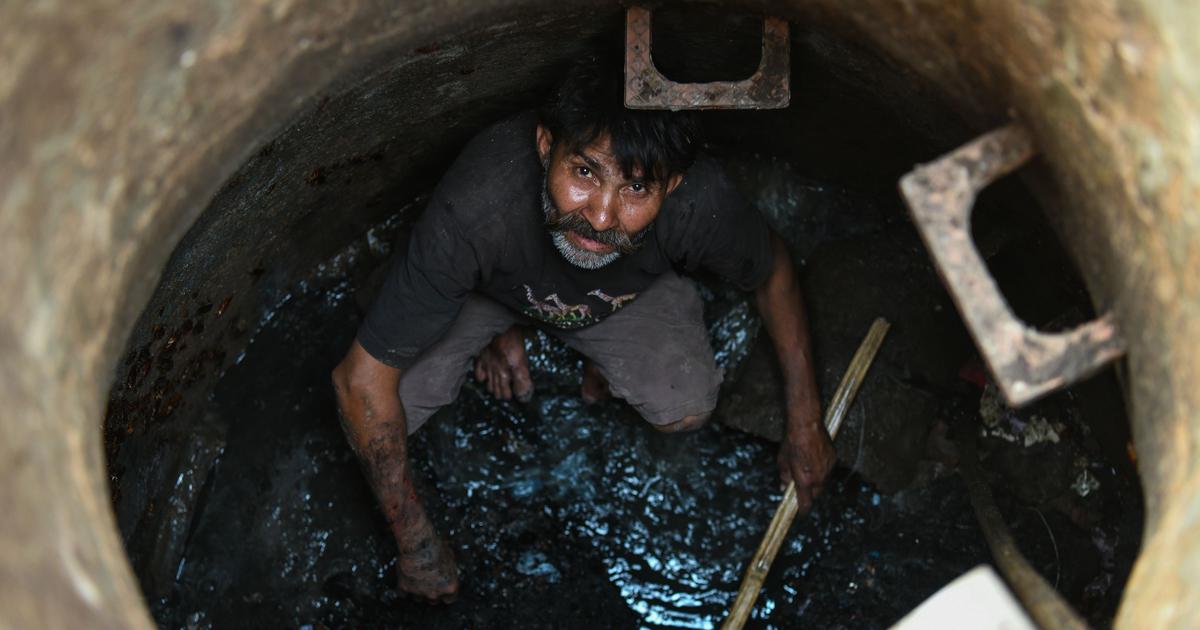Manual scavenging refers to the practice of manually removing human excreta which includes cleaning, carrying and disposing of such waste from the sewers or dry latrines. This evil practice is associated with the caste system wherein the so-called lower class is expected to perform such tasks, resulting in marginalization and exploitation of the community. Therefore, it can be seen as a form of modern-day untouchability.
Laws
The practice of manual scavenging violates Article 21 of the Indian Constitution which guarantees the ‘Right to live life with dignity.’
It is pertinent to highlight that in India manual scavenging is banned under the Prohibition of Employment as Manual Scavengers and their Rehabilitation Act of 2013 (PEMSR). The Act acknowledges it as a “dehumanizing practice” and cites a need to “correct the historical injustice and indignity suffered by the manual scavengers.”
Earlier, India banned the employment of people as manual scavengers in 1993. Then in 2013, landmark legislation was passed in the shape of the Manual Scavenging Act, which seeks to reiterate the prohibition of manual scavenging in all forms.
Additionally, it provides for the identification and rehabilitation of manual scavengers through a mandatory survey.
With the PEMSR Act of 2013, the term ‘manual scavenger’ was expanded to encompass all people employed to clean septic tanks, railroad tracks, and ditches.
Why is it still prevalent in India?
Despite all the measures, laws and periodic interventions by the court, this heinous practice persists in India. According to a study presented by the World Health Organization (WHO), “weak legal protection and lack of enforcement of the laws, as well as the poor financial status of sanitation workers, contribute to the practice still prevailing.”
Therefore, the two fundamental factors as to why it is persisting in India are the lack of enforcement of the Act and the age-old exploitation of unskilled laborers.
Diseases associated with Manual Scavenging
In a report made public by WHO, World Bank, Water Aid, and International Labor Organization in 2019, the authors discuss the plight of sanitation workers, in countries such as Bangladesh, Burkina Faso, Bolivia, Haiti, India, Kenya, Senegal, South Africa, and Uganda, who work in poor conditions.
The same report highlights several medical conditions associated with sanitation work which include- dizziness, asthma, fever, gastroenteritis, cholera, typhoid, etc.
Furthermore, in many cases, the victims lose consciousness and die of asphyxiation resulting from the harmful gases in the septic tanks. According to the data of Safai Karamchari Andolan – an NGO, the life span of a manual scavenger is only 40-45 years, primarily because of multiple health issues and other factors like drug abuse, etc.
Is it a vicious cycle?
According to data presented by the Safai Karamchari Andolan- an NGO, the income of a manual scavenger, especially women is Rs 180-200 per month per household. While no one would wish for such a livelihood, it is evident that a significant number of people are trapped in this vicious cycle.
Social stigma and discrimination
Although, for many manual scavenging may have ended as a form of employment, however, the stigma and discrimination associated with the job persist. This impacts their lives in one way or another. This in turn makes it even more difficult to secure an alternative livelihood. Therefore, it further systematizes the segregation of location of the manual scavengers.
According to the National Commission for Safai Karamcharis database, around 608 people died between 2013 and 2017 while cleaning septic tanks. On the other hand, data presented by the Safai Karamchari Andolan – an NGO, reported around 429 deaths between January 2017 to August 2017 in the national capital region alone.
472 deaths from 2016 to 2020 and 26 deaths this year till date due to manual scavenging are recorded with details of each incident sent to central government! Still it keeps denying even a single death!! Shameful!!#ManualScavenging #stopkillingus
— Bezwada Wilson (@BezwadaWilson) July 31, 2021
In 2020, activist Bezwada Wilson from Safai Karamchari Andolan tweeted about the number of deaths due to manual scavenging. He further reiterates the need of incorporating technology in such jobs to eradicate the concept of manual scavenging as a whole.
Why is that a dehumanizing practice gets so much normalized that we as responsible citizens are not even bothered to acknowledge the evil and age-old stigma associated with it?

